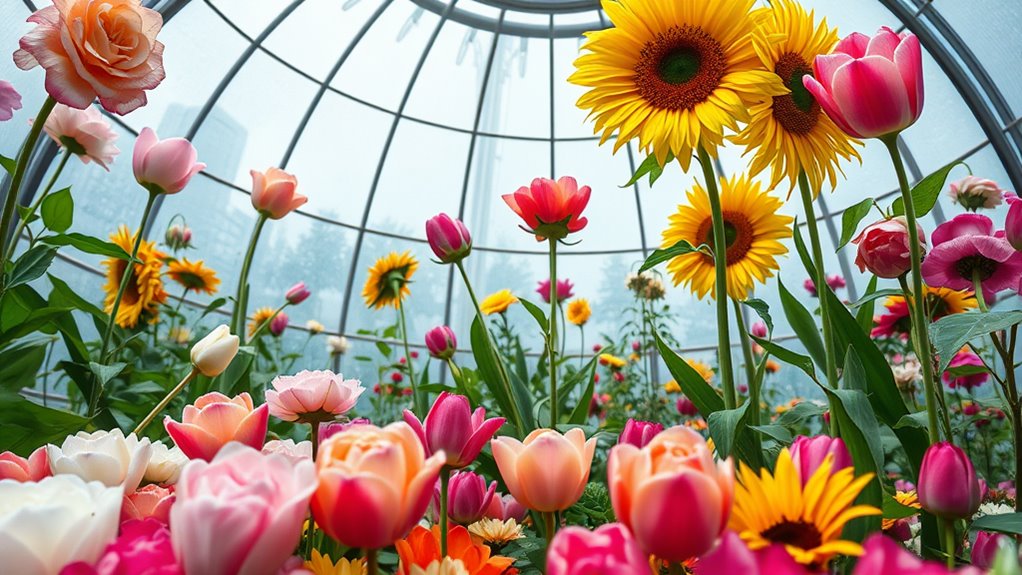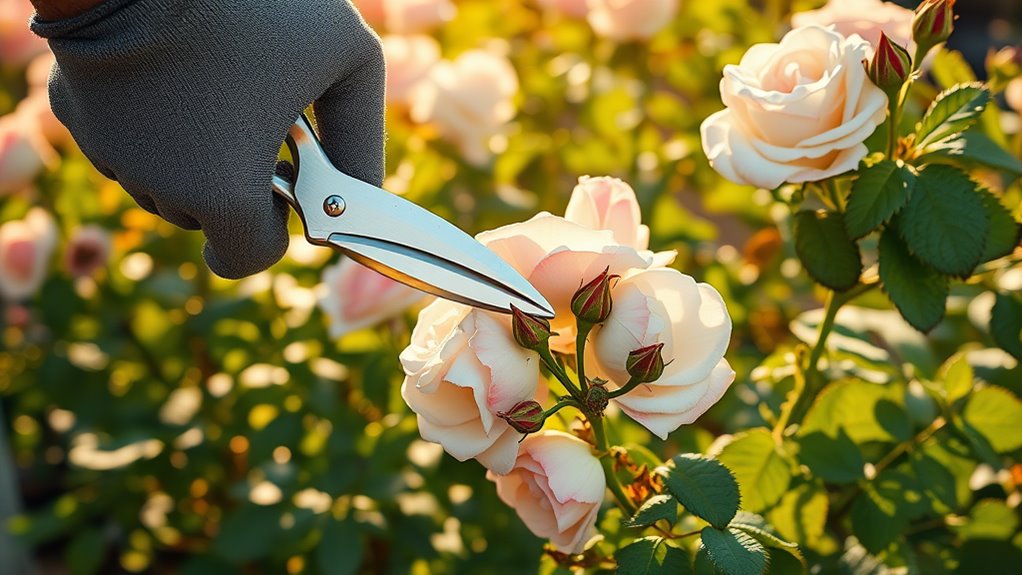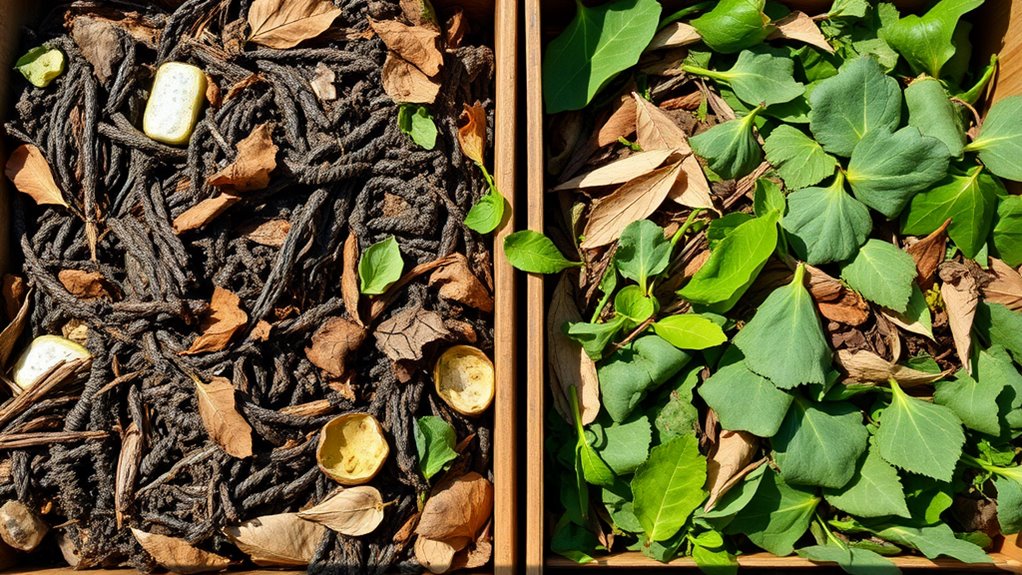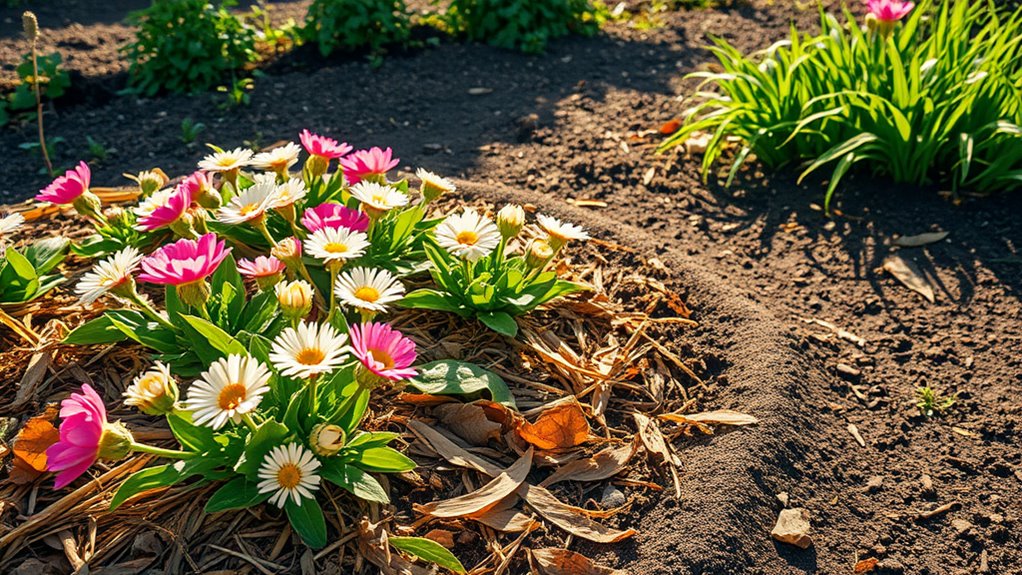A Flower Garden That Blooms All Year. Here’s the Trick
You can create a year-round blooming flower garden by selecting plants for each season, like daffodils for spring and chrysanthemums for autumn. Design a layered layout with tall plants at the back, mid-sized ones in the middle, and low growers up front for eye-catching depth. Blend hardy varieties with exotic ones, such as sedums and hibiscus, and follow seasonal care like mulching and watering to keep them thriving. With these strategies, you’ll maintain vibrant colors all year, and soon find even more tips to elevate your garden’s beauty.
Key Takeaways
- Select plants for each season, like daffodils for spring and evergreens for winter, to ensure continuous blooms.
- Design a layered layout with tall plants at the back and low ones at the front for year-round visual interest.
- Incorporate hardy perennials with exotic varieties, such as sedums and hibiscus, for resilient diversity.
- Apply seasonal care techniques, like mulching in spring and watering in summer, to maintain plant health.
- Focus on soil health and sustainable practices, such as regular testing, to promote long-term blooming sustainability.
Selecting Plants for Every Season
When you’re planning a flower garden that blooms year-round, selecting plants for every season ensures continuous color and interest.
In seasonal flower gardening, you start by assessing your climate zone to pick spring bloomers like daffodils and crocuses for early vibrancy.
For summer, choose heat-tolerant options such as zinnias and sunflowers that thrive in warmth.
Autumn demands hardy perennials like chrysanthemums for fall hues, while winter calls for resilient evergreens or hellebores to add subtle structure.
Always verify plant hardiness and soil needs to guarantee success, creating a balanced, ever-changing display. Additionally, incorporating layout strategies can help achieve a professional appearance in your garden design.
Incorporating a variety of plants ensures year-round blooms, making your garden a constant source of joy.
Designing a Layered Garden Layout
Once you’ve selected your plants for each season, you arrange them in layers to maximize visual interest and space. This approach draws from vibrant flower bed care to ensure your garden remains healthy and productive year-round.
This means positioning tall plants at the back for height, mid-sized ones in the middle for transition, and low-growing varieties at the front for detail, creating a dynamic, year-round tapestry that draws the eye and optimizes your garden’s footprint.
-
Feel the thrill of watching layers burst into color, evoking childlike wonder with each seasonal change.
-
Savor the warmth of a garden that hugs you with depth, stirring memories of peaceful retreats.
-
Embrace the comfort of harmony in your layout, igniting a sense of belonging and serenity.
-
Revel in the pride of your creation, inspiring joy and a deep emotional connection to nature’s rhythm.
By incorporating seasonal tips into your layered design, you can adapt your garden to thrive through every season’s changes.
Incorporating Hardy and Exotic Varieties
To balance your garden’s resilience with visual excitement, you’ll blend hardy varieties—tough plants like conifers or native perennials that withstand frost and drought—with exotic ones such as orchids or tropical blooms, ensuring year-round appeal while minimizing maintenance risks.
You’ll select hardy plants for their low-maintenance nature, placing them as backdrops to support delicate exotics in sheltered spots. For instance, pair drought-resistant sedums with vibrant hibiscus to create focal points that thrive despite challenges.
Research local hardiness zones to match exotics with microclimates, boosting biodiversity without overwhelming your routine care efforts. This strategic mix keeps your garden vibrant and robust. Additionally, by using companion planting techniques, you can increase crop yields through effective plant pairings.
To further enhance plant health and deter pests, incorporate companion planting strategies that pair complementary species for mutual benefits.
Implementing Seasonal Care Techniques
As seasons shift, you’ll adapt your garden’s care routine to ensure hardy and exotic plants thrive year-round.
Tailor your approach with precise watering, pruning, and protection to match each season’s demands, fostering a vibrant, ever-blooming oasis that rewards your efforts.
-
In spring, revive your garden by clearing debris and applying fresh mulch, sparking a rush of renewal and eager anticipation for budding life. Additionally, incorporating effective mulching can significantly enhance soil moisture retention and promote healthier plant growth.
-
Through summer, diligently water and stake tall stems, evoking deep satisfaction as you witness your flowers’ bold, sun-kissed splendor.
-
In autumn, trim faded blooms and add protective layers, stirring heartfelt warmth and a protective bond with your resilient plants.
-
For winter, shield roots with burlap and reduce feeding, igniting quiet hope and emotional resilience for the garden’s triumphant return.
To achieve this with ease, embrace minimal maintenance strategies that focus on effortless techniques for sustained color and appeal throughout the year.
Ensuring Long-Term Bloom Sustainability
Building on your seasonal care routines, you prioritize soil health and plant selection to keep blooms thriving for years. Regularly test and amend your soil to maintain optimal pH and nutrients, while choosing resilient, climate-adapted plants that promote biodiversity. Implement sustainable watering, pruning, and pest management to prevent depletion. Track progress through simple monitoring. Moreover, fall mulching is key for preparing your garden for the colder months ahead. To further enhance soil health and moisture levels in your garden, consider incorporating mulch as an effective layer to suppress weeds and retain essential water.
| Focus Area | Practical Tips |
|---|---|
| Soil Health | Test annually; add compost yearly |
| Plant Selection | Choose perennials; rotate species |
| Water Management | Use drip systems; mulch for retention |
| Pest Control | Introduce beneficial insects |
| Maintenance Routine | Prune dead blooms; monitor growth |





